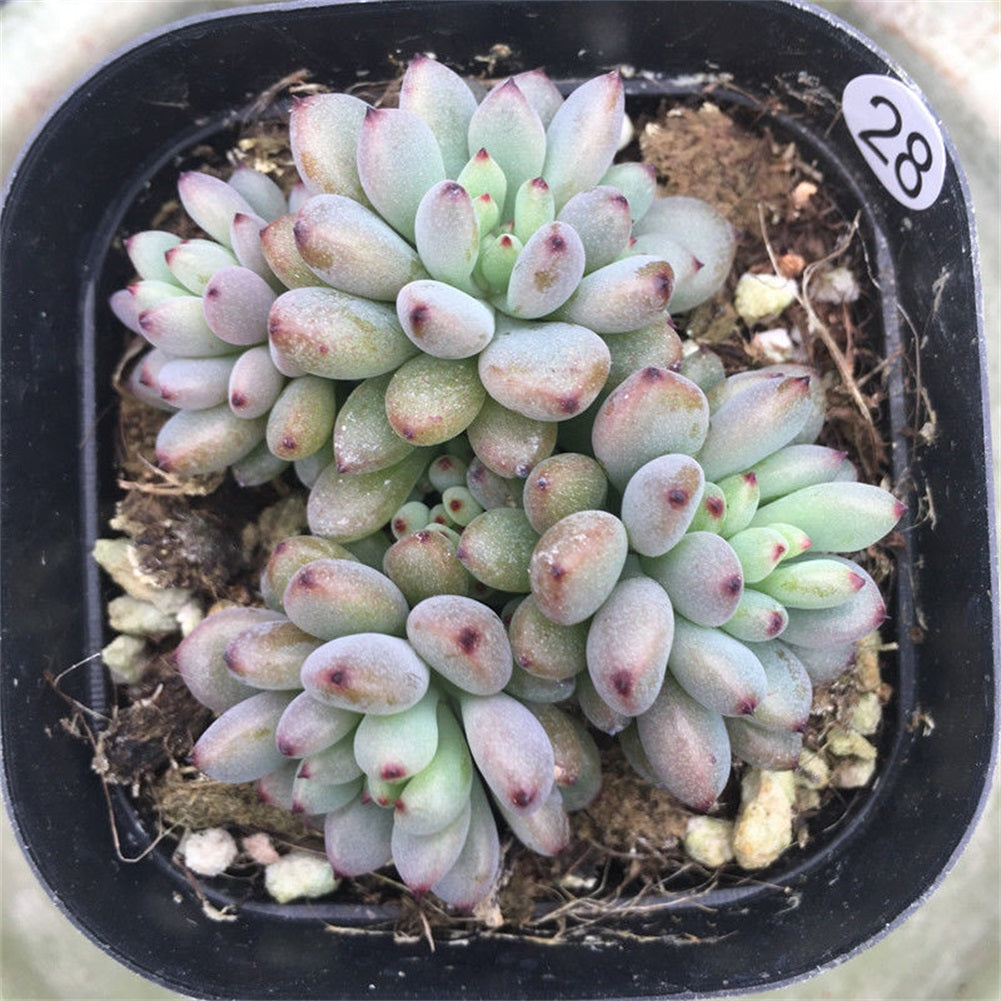Graptopetalum blackberry is a perennial succulent plant of the Crassulaceae family, belonging to the genus Sedum. It is a horticulturally bred variety with a typical height of usually less than 15 centimeters. The old stems become woody and can grow upright, obliquely, or prostrate. The leaves are inversely ovate and succulent. Blackberries have a similar appearance to blue beans and green beans. In environments with abundant sunlight and significant temperature differences, the leaves of blackberries tend to be darker in color compared to the other two, especially at the leaf tips. The small white star-shaped flowers bloom in summer. The leaves of Graptopetalum blackberry plants are blue in color, elongated, opposite in arrangement, with slightly pointed tips. Under strong light or during periods of large diurnal temperature differences or low temperatures in winter, the leaves exhibit a beautiful blue color, with the leaf tips typically showing a slight blackish-brown color throughout the year. In low light conditions, the leaves turn pale green, become narrower and longer, and the branches tend to elongate. The leaves of blackberries are covered with sparse white powder and have smooth surfaces. The clustered inflorescences produce flowers that are white with red spots, pentagonal, and open upwards. The name "Graptopetalum blackberry" originates from the reddish-black coloration of its leaf tips and is also referred to as "black bean."
Apart from some similarities with blue beans, blackberries, compared to blue beans, have no powdery coating on their leaves, and when in good condition, the blackening of the leaf tips is more pronounced.
Blackberries flower in summer, with five-lobed star-shaped white petals with red spots.
Growth habits and care methods of blackberries:
Overall, blackberries are relatively easy to care for and tolerate summer well. They only require attention to shading and watering control. If the leaf color becomes pale green, the connection between the leaves and branches whitens, and there are signs of elongation, it is necessary to increase the light appropriately to avoid excessive elongation. However, be cautious not to increase the light intensity too quickly during summer, as it may lead to sunburn or even death. Apart from summer, blackberries can be considered for outdoor cultivation. With sufficient sunlight, the plant will have a more compact growth habit and more attractive colors. Water thoroughly until the water drains out, and choose a loose, well-draining medium for potting soil.
Blackberries prefer light and can tolerate temperatures between 5°C and 30°C. They can withstand drought. Note that insufficient light may cause the plant to elongate.
In terms of light, blackberries prefer bright sunlight, so it's essential to ensure adequate light during the cultivation period. Generally, during spring, autumn, and winter, blackberries can receive full sunlight throughout the day. However, during summer, it's necessary to provide some shade and increase ventilation when the temperature is high and the sunlight is intense.
When watering, adhere to the principle of watering thoroughly until the soil is dry. In summer, water sparingly or not at all when the plant is dormant. Watering can gradually resume in autumn. In winter, water sparingly when the temperature is too low, avoiding spraying or wetting the leaves.
Propagation of blackberries:
Blackberries can be propagated by leaf insertion or stem cutting.
